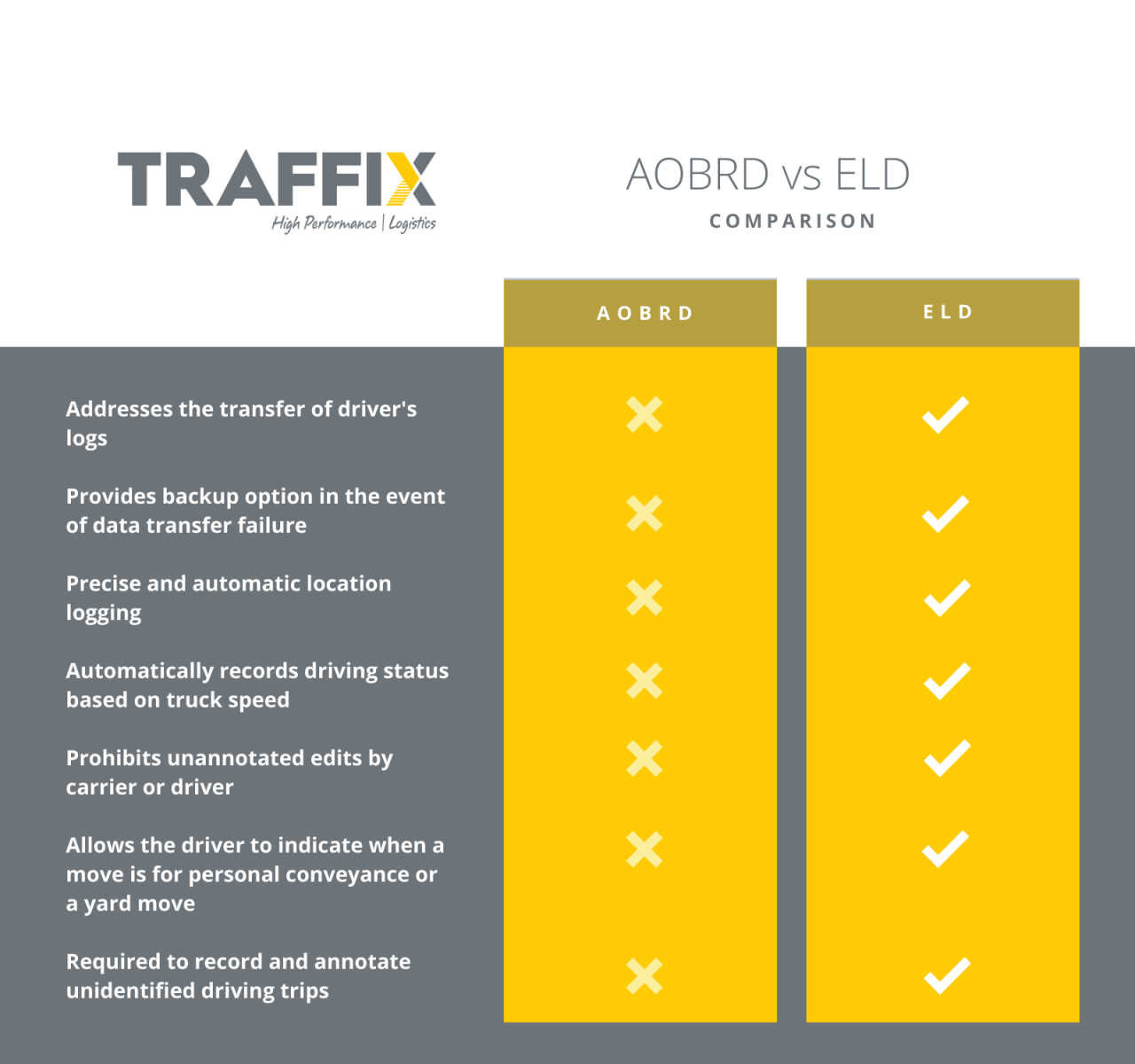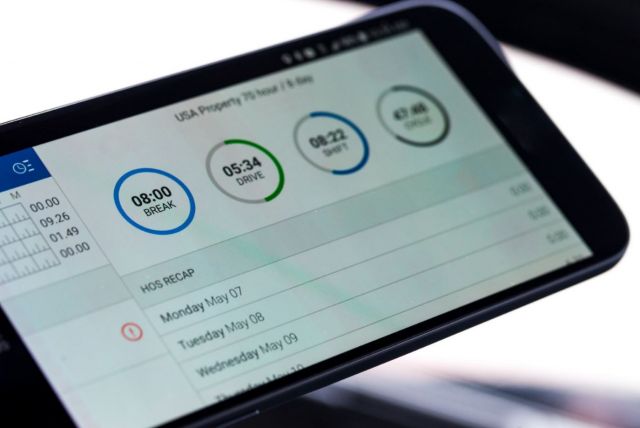ELD Mandate in Canada
On June 12th, 2021, the requirement to comply with the ELD Mandate went into effect in Canada. Compliance with ELD regulations has been effective since December 18, 2017, in the United States. In this blog we will talk about the pros and cons of ELDs and some of the fundamental differences between the US and Canadian regulations.
What is an ELD?
Electronic Logging Devices or ELDs are used to record driver’s hours-of-service when driving commercial vehicles. Prior to the introduction of ELDs, drivers recorded hours of service in paper logbooks leaving room for error and the opportunity to “fudge the numbers”. The purpose of the ELD mandate is to ensure drivers do not exceed the legal maximum hours of service to avoid exhaustion and reduce risks of an accident.
What are the benefits of ELDs?
The primary benefit of ELDs issafer roads. Fatigued drivers behind the wheels of transport trucks can result in deadly crashes. As the United States implemented the use of ELDs in 2018, Canada’s ELD mandate will help carriers work more seamlessly with US regulations. ELDs may even level the playing field for competing carriers; for example, if a carrier was using paper logbooks to “doctor” their hours of service in order to reduce transit time as a method of competition, this will no longer be feasible. ELDs will also take the pressure off drivers who may have been pushed to extend their driving hours despite feeling too tired to drive. For provincial and territorial law enforcement, ELDs will mean less resources are needed to police the regulations set out by Transport Canada.
Are there disadvantages to ELDs?
The transportation industry is seeing the demands for tracking and visibility by its customers at an increasing rate, with some customers enforcing strict tracking KPIs. Many drivers have expressed that this is an invasion of their privacy. During work hours, it has been compared to wearing a tracking device when you are in an office. During a driver’s off hours, many feel it can be compared to being tracked in your home after work. ELDs mean that drivers can be tracked for the duration of their trip, which has some upset. As with any new technology there is a learning curve that can be expected. Thankfully, Transport Canada is providing a grace period for carriers as they learn how to properly operate these new devices. Cost might be the greatest disadvantage to the ELD mandate. For carriers, especially those with large fleets, the cost to purchase, install and maintain ELDs will far exceed the costs of paper logbooks.
How do the Canadian ELD regulations differ from the US ELD regulations?
The biggest difference between the ELD mandate in Canada versus the USA is the device certification process. In the United States, the Federal Motor Carrier Safety Administration (FMCSA) permits all manufacturers of ELDs to certify their own devices in compliance with the regulations. In Canada, however, the regulations state that even if the device properly records driving time, ELD manufacturers must have their devices certified by a third party. Canadian carriers already using ELDs in compliance with FMCSA regulations may not be compliant in Canada if their ELD is not certified by an accredited third party. Could this mean that some carriers might need to incur the costs of devices, training, and installation a second time?
In the USA, ELDs are not required to provide alerts when driver’s hours of service are almost up. Many of us can agree that losing track of time is a real thing. In Canada, ELD regulations accommodate for this phenomenon by requiring all ELDs to provide a 30-minute warning before a driver’s hours of service are up.
Personal conveyance is an allowance drivers get when they are “off duty”. Being off duty means that the driver is no longer carrying out work for their employer. During this time, drivers may move their trucks for personal reasons. For example, leaving the place where they shut down to sleep to commute to a grocery store or restaurant for a meal. The miles driven between these two locations would be considered “personal conveyance”. In Canada, drivers are allotted 75km (about 47 miles) per day of personal conveyance. In the USA, drivers do not have a personal conveyance limit. In Canada, ELDs will go into driving mode when the truck hits 32 km/hour (approximately 20 miles/hour); however, in the USA, ELDs automatically go into driving mode at 5 miles/hour (about 8 km/hour).
In Canada, there will be a limited number of exemptions within the ELD mandate. Carriers with trucks manufactured before 2000 or are renting trucks for 30 days or less may be exempt. Transport Canada is implementing a “Short Haul Exemption” for drivers operating trucks within a 160 km (approximately 100 mile) radius of their home under the premise they would not have much opportunity to exceed hours of service regulations.
A more convenient regulation set out by Transport Canada compared to FMCSA regulations is that Canadian carriers can send their ELD data via email. Conversely, in the USA, carriers must transmit ELD data via telematics (essentially using radio waves to transmit real time data between devices) or by connecting the device with a USB cable.
What about carriers using AOBRD devices?
An AOBRD device is like an “old-school” ELD. The table below demonstrates the key difference between an AOBRD device and an ELD:

When the ELD mandate went into effect in the United States, the FMCSA gave carriers using AOBRD devices a “Grandfather Clause”. This meant that while the compliance date was set for December 18, 2017, Carriers with AOBRD devices had until December 16, 2019, to comply. In Canada, there will be no such grandfather clause for carriers using AOBRD devices.
Check out next week’s blog discussing the certification process of ELD’s in Canada.
If you have questions or comments about this post, please email marketing@traffix.com.



